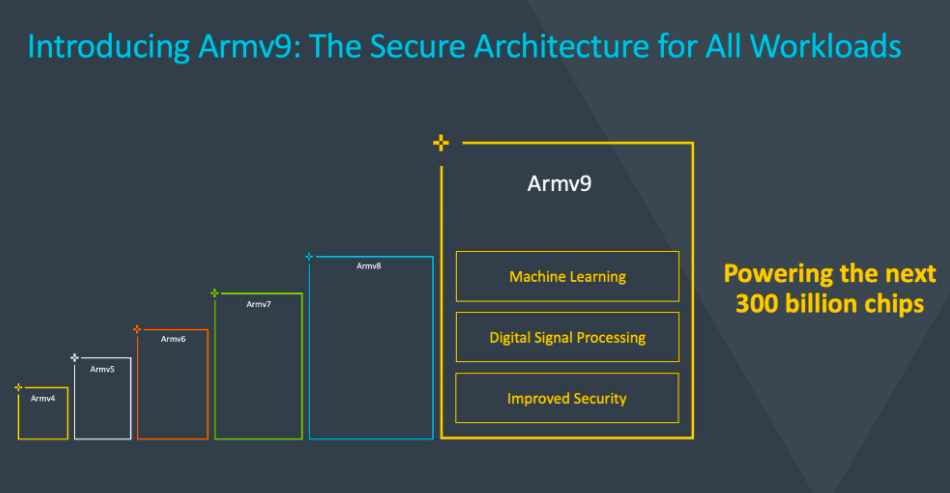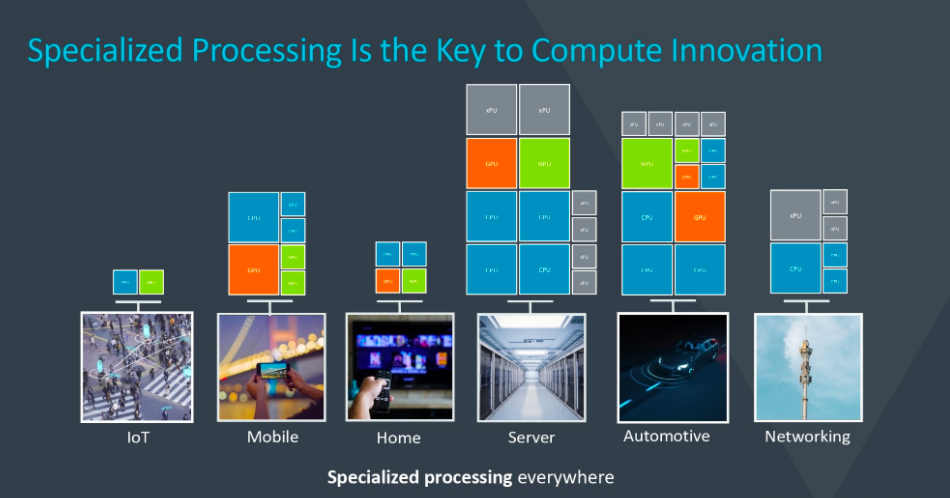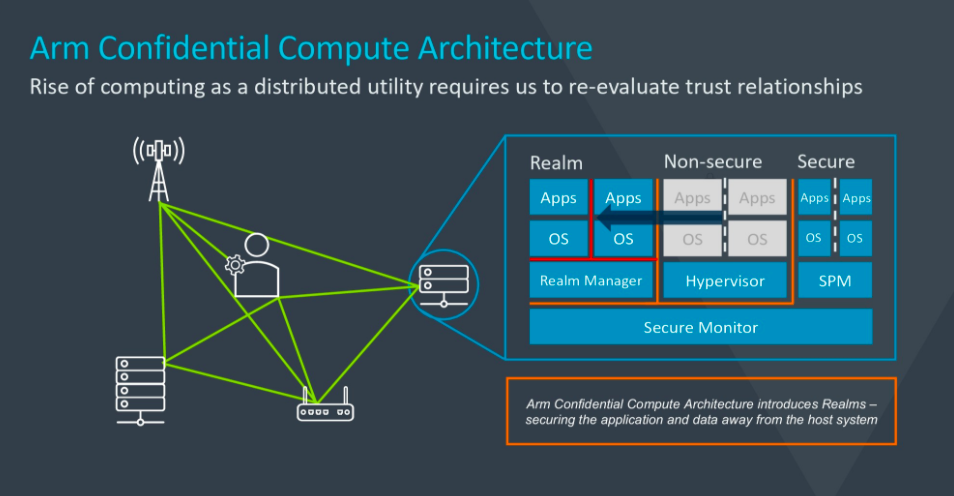From vaccination passports and digital medical records to drone navigation systems and technologies enabling a safe return to the workplace, Arm CEO Simon Segars outlined a bevy of use cases for the company’s first new compute architecture in 10 years, the Armv9. During an online event this week outlining the company’s future technology vision, Segars said the v9 architecture will improve security and trust and serve as the foundation for the next decade of computing.
“I am confident that every bit of digitally shared data will soon be securely processed on Arm-based technology at some point in its life, either at the end point, in the digital networks, or the cloud,” said Segars. “That simple truth ties our future to the future of computing.”
Arm, which is a leading developer and licensor of CPU designs, said the new architecture provides significant security, performance and power efficiency gains over the previous generation. Two of the key new features are focused on security, including memory tagging, which Segars said helps eliminate memory safety issues, and Realm management, which essentially provides a container-like vault for secure data manipulation.
Alongside new security features, the Armv9 provides a scalable vector extension upgrade, SVE2, that extends support for specialized AI, DSP and xR workloads. AI gets a further boost in the v9 with future graphics upgrades for matrix processing, while additional capabilities will work to accelerate the move from general-purpose to more specialized compute as AI, the Internet of Things and 5G gain momentum.

The future of Arm architecture
Arm’s bet for the future of computing is built on the premise that specialized, purpose-built system design is key to compute innovation. Armv9 is a rolling program of enhancements to the Arm architecture that the company will deploy over the next few years that aims to increase its computing capability in the areas of digital signal processing and machine learning, and improve the security and robustness of Arm’s systems, the company said.
Richard Grisenthwaite, SVP, chief architect and fellow for Arm, noted that the architecture works to bridge the gaps between hardware and software, while also enabling standardization to help partners balance time-to-market and cost control. Arm said the v9 architecture will apply across all of its CPUs, from the smallest microcontrollers to the largest server-focused designs.

Security is at the core of Arm’s v9 roadmap. The company is introducing Confidential Compute Architecture (CCA) as part of v9 and said the concept enables computation to be performed in a hardware-based secure environment to protect data in use. The new Realms and memory tagging functionality are part of the Arm CCA strategy. Arm said Realms can compartmentalize pieces of an application for security, even from privileged software, thereby enabling confidential compute.
“Realms is a new technology and we do anticipate it being implemented widely and we are working very hard on the software side of that,” said Segars. “Realms are similar to containers but with real hardware support to keep data and code protected. We believe Realms provides rigorous security safe hardware support.”
Arm said it plans to disclose more details around its confidential computing architecture later this year.
Segars also discussed confidential computing in a fireside chat with Microsoft president Brad Smith as part of the company’s vision event. The executives both pointed out how the Spectre and Meltdown vulnerabilities highlighted the need for better security of compute devices.
“What Spectre showed was a new need to harden the supply chain for hardware and what we have seen over the last few months is to do the same thing for software,” said Smith.

The future of Arm with Nvidia
Addressing Arm’s ongoing acquisition by Nvidia, Segars reiterated that there would be no change to the Arm business model if and when the deal closes.
“The combination of Arm’s compute platform and ecosystem with Nvidia’s deep expertise in artificial intelligence will create the world’s leading computing company for the age of AI,” Segars said. “This combination will bolster our R&D capability, and lead to new and exciting products that will propel Arm’s vision. Specialized processing built on the economics, design freedom and accessibility are advantages of our ubiquitous computing platform, enabling our partners to deliver best in class solutions across all markets.”
The Nvidia-Arm deal remains strong on paper, but analysts have noted that it’s unlikely to get regulatory approval. The deal needs regulatory approval in the UK, China, US, and EU.





































